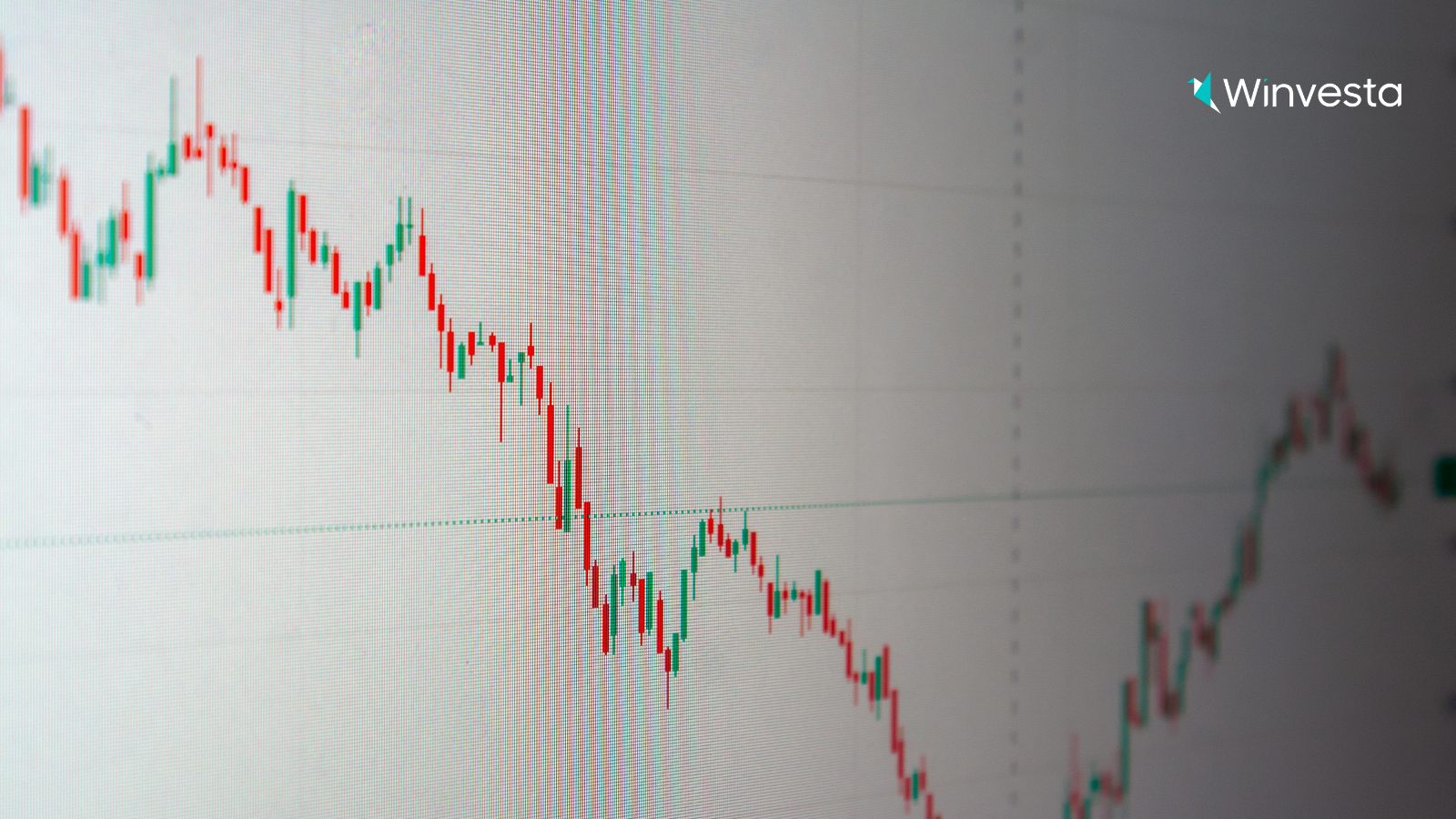Contents
Beginner’s guide to popular intraday trading strategies
7 minutes read
17 July 2025

Fast decisions, quick trades, and the thrill of watching your screen tick by the minute—intraday trading holds a unique appeal. It offers the potential for same-day profits and constant action, which is why many beginners are drawn to it. But with so much happening in just one trading session, where do you even start?
If you're new to intraday trading, it's easy to feel swamped by the number of approaches out there. The internet is full of opinions on trading strategies intraday traders "must" learn. Yet, very few explain how beginners should choose one, and even fewer discuss tailoring strategy to one's lifestyle or managing risk appropriately.
This guide is here to clarify that. We'll walk through the most beginner-friendly intraday trading strategies, break down how to match each approach with your personality and goals, and explain why risk management isn't optional—it's essential. You'll also learn practical tips on when to enter and exit a trade using reliable indicators and real stock examples.
Whether you're looking for the best day trading stocks or wondering how intraday algorithmic trading tools can help you stay disciplined, we've got you. By the end, you'll have a better understanding of how to build a solid foundation without feeling overwhelmed from the start.
Think of this as your guide to innovative and steady learning in an unpredictable environment. Let's dive into what works, what doesn't, and how to avoid common traps as you shape your way to trade within the day.
Understanding the most popular intraday trading strategies
Momentum trading
Momentum trading focuses on stocks that are already moving significantly in one direction—up or down—and jumping in early to ride the wave. It's based on the idea that once a trend starts, it often continues for some time.
For beginners, this strategy is easy to understand and relatively simple to execute. You don't need to guess market direction—you follow it. Stocks making news, like earnings beats or sector upgrades, are common momentum plays. Intraday trading with momentum relies on volume spikes, price breakouts, and market sentiment to capitalise on opportunities.
Momentum setups can be identified using tools such as moving averages or RSI divergence. Just remember: timing is everything. Get in too late, and the move may already be fading.
Scalping strategy
Scalping is about speed and precision. Traders aim to make small profits—such as ₹1 to ₹3 per share—multiple times a day. Each trade lasts just seconds or a few minutes. It's not about catching big moves, but about volume and consistency.
This strategy can appeal to beginners with access to low-commission platforms and fast execution. However, it requires serious attention and strict adherence to exit discipline. One bad trade can erase the gains from several good ones.
Scalping is most effective on highly liquid stocks, where price spreads are narrow. You'll need to monitor level 2 data, trading volume, and quickly moving technical signals. It's a high-effort style but teaches real-time reaction skills better than most.
Breakout and reversal strategies
Breakout trading involves identifying a stock that's moving beyond a key level—such as support or resistance—and entering the trade early in the move. Reversal trading, on the other hand, looks for signs that a trend is about to end and aims to profit from the change in direction.
Breakouts are beginner-friendly because they're often easy to identify on charts. Price crossing a 52-week high, accompanied by substantial volume, is a typical entry signal. Reversal trades are trickier. You'll need confirmation tools like MACD crossovers or candlestick patterns.
Both tactics are popular in intraday trading, especially when markets are volatile. Just be sure to wait for confirmation signals, not blind bets. False breakouts and fake reversals are common traps if you rush in too soon.
Choosing the right intraday strategy for your trading style
%20-%202025-07-17T121234.468.png?width=1600&height=900&name=Blog%20images%20(2)%20-%202025-07-17T121234.468.png)
Assessing your risk tolerance
Every intraday strategy comes with a different level of risk. Before choosing one, ask yourself: how much money are you comfortable risking in a single trade?
If you worry about sudden market swings, momentum or reversal strategies may be a better fit, as they offer clearer entry points and tighter stop-loss levels. On the other hand, if you're comfortable with making fast-paced decisions and can handle rapid fluctuations in loss or gain, scalping might suit your style.
Start small and track how each strategy feels emotionally. Risk tolerance isn't only about how much you can afford to lose—it's also about how you handle pressure in the heat of the trade.
Matching strategy with market conditions
Markets don't behave the same way every day. Some days are trending. Others move sideways. Aligning your approach with market behaviour is crucial.
For example, breakout strategies are particularly effective during high-volatility days or news-driven sessions. Scalping thrives when volumes are steady but price moves are tight and quick. Reversal trades can perform better in overbought or oversold markets where momentum is likely to shift.
Utilise pre-market scans and tools, such as the average true range (ATR), to assess current market conditions. The best intraday trading strategies align with the market's behaviour, not just your plan.
Choosing the best shares for day trading
Picking the right stocks is half the battle. The best shares for day trading typically have high liquidity, tight spreads, and strong price movement.
Look for stocks with:
- High daily volume (more than 1 million shares)
- Volatility over 2%–3% per day
- Scheduled news or earnings releases
Popular picks often include names like Reliance Industries, Infosys, or Tata Motors for NSE traders, and Tesla or Nvidia for U.S. markets. These stocks frequently appear in scans for the best day trading stocks due to their consistent activity.
Start tracking a basket of 5–10 stocks daily. Focus builds familiarity. That's a significant advantage in intraday trading, where speed is crucial.
Why risk management is crucial in intraday trading success
Position sizing and stop loss levels
Risk management starts before you place a trade. One of the most essential tools is proper position sizing. It answers the question: how many shares should you trade?
A common rule is to risk no more than 1%–2% of your capital on any single trade. That means if your trading account is ₹1,00,000, you should risk no more than ₹1,000–₹2,000 per trade, including stop-loss levels.
Stop losses define your maximum loss upfront. Place them just beyond support or resistance zones for technical setups. Don't move them mid-trade. Doing so can quickly turn a slight loss into a significant one.
Consistently sized positions with fixed risk levels protect your balance through a series of trades. You won't win every time, but your account won't blow up either.
Using tools and technology for automation
You can't watch every tick all day. That's where tools—especially in intraday algorithmic trading—offer serious advantages. Algorithms can help you automate entries, exits, and stop-loss orders with strict rules.
For beginners, platforms like Zerodha Streak or Tradetron let you set basic strategies without coding. These platforms run your plan automatically, preventing impulsive actions mid-trade.
Key benefits of automation for intraday trading include:
- Faster order execution with minimal slippage
- Consistent application of risk limits
- Reduced emotional interference
Even simple auto-order brackets or trailing stop-loss tools can make a big difference in execution and capital protection.
Emotional control and discipline
Risk management isn't only about numbers—it's also psychological. Intraday trading can trigger fear, greed, and panic, especially when trades move quickly against you.
That's why having—and sticking to—a defined strategy matters. If you take random trades, you'll likely incur random losses as well. To build consistency, act like a machine: follow your rules without exception.
Set limits on how many trades you'll attempt in a day. Some traders stop after two losing trades. Others avoid trading after a big win to prevent overconfidence. Intraday trading rewards discipline more than raw skill.
Next, let's examine how your entry and exit decisions can impact your overall results, even more significantly than your win rate.

Ready to own a piece of the world’s biggest brands?
- Invest in 4,000+ US stocks & ETFs
- Fractional investing
- Zero account opening fees
- Secure and seamless
Start investing in just 2 minutes!

Build your global portfolio.
.png)
Invest in companies you love, like Apple and Tesla.

Track, manage, and grow your investments.
Mastering trade entry and exit for better results
Identifying high-probability setups
Getting into a trade at the right moment can make all the difference. A good entry setup aligns with multiple indicators and the overall trend. Popular signals include VWAP (Volume Weighted Average Price), moving averages, and clean trendline breaks.
If you're watching the best day trading stocks today—like Reliance, HDFC Bank, or Infosys—wait for confirmation patterns. For instance, a stock breaking above VWAP with rising volume often hints that momentum is picking up.
Don't chase moves. Instead, set alerts for key levels and use limit orders to manage your position. High-probability trades often occur near support or resistance lines, where the price reacts predictably.
- Use pre-defined entry points, not gut feelings
- Combine indicators for stronger confirmation
- Avoid entering sideways or choppy zones
Exit strategies to lock in profits
Knowing when to exit matters just as much as knowing when to enter. You can't rely on hope or fear when it's time to take profits. Exit based on your target, not emotions.
Simple exit rules include fixed profit targets, trailing stop-losses, or exiting at the next level of resistance. For example, if you buy a breakout on one of the best day trading stocks today and it nears a previous high, that's often a smart place to sell.
Trailing stops are helpful when the market moves in your favour. They lock in gains while giving the stock room to breathe. If a trade moves ₹5 in your favour, you might trail a stop ₹2 below the peak.
- Set exits before entering the trade
- Use alerts to monitor reversal signals
- Don't change your target mid-trade
Now that you understand when to enter and exit a trade, it's time to test those setups in real conditions. Start small, and don't skip the stop-loss.
Your next step involves practising these trading strategies intraday using a demo account or charting tool. Check the best sites for day trading or find the best website for day trading that suits your workflow and trading style.
This will help you refine your timing, manage risk effectively, and gain confidence without putting your capital at unnecessary risk. Over time, combining discipline with a few proven strategies can lead to more brilliant, more consistent trades.
Frequently asked questions about trading strategies intraday?


Contributed by Denila Lobo
Denila is a content writer at Winvesta. She crafts clear, concise content on international payments, helping freelancers and businesses easily navigate global financial solutions.



